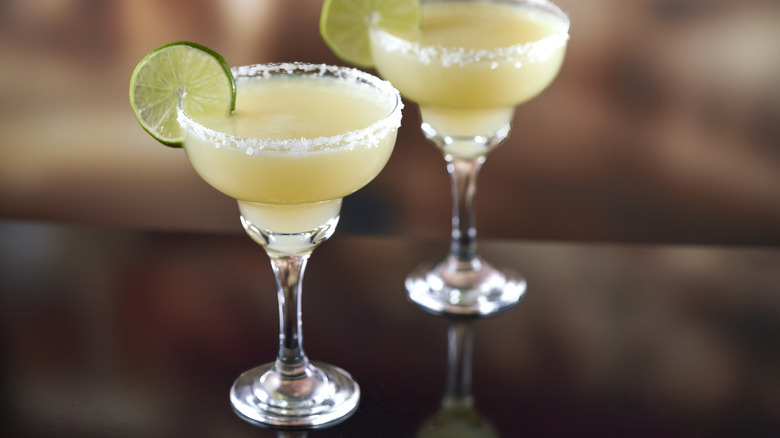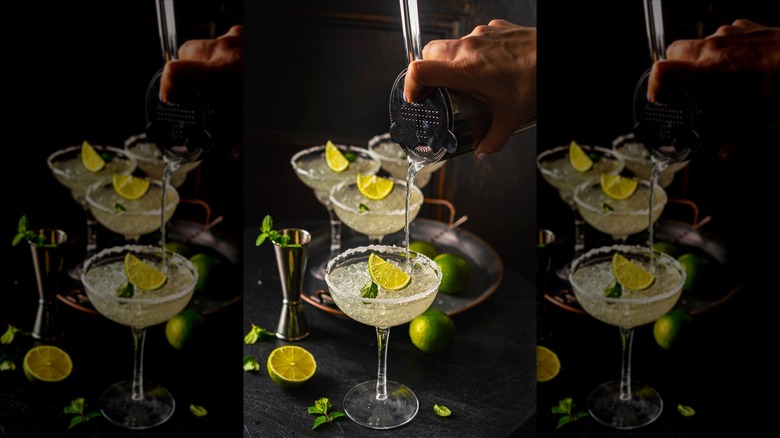How To Make Homemade Margaritas Taste Like A Professional Bartender Made Them
It's not too difficult to make a perfectly passable margarita at home, or raid your pantry for a decent non-alcoholic margarita (The secret to the latter is Earl Grey tea, believe it or not), and yet, they always seem to taste better at restaurants. (This may exclude Applebee's strategic $1 cocktails, since its infamous Dollaritas are rumored to be watered down.) Chris Furtado, an area manager Infinium Spirits, which distributes Tequila Corralejo, explained that a large part of this comes down to one factor: "Practice. Bartenders make better drinks because they get lots of practice and tweak their technique, making it better and better."
Another reason, however, may be that some bars and restaurants have bigger budgets for booze than the rest of us do. "Always use the freshest ingredients you can. Always use the highest quality ingredients you can afford or that are available," advised Furtado. He allowed that it's not a sin to use cheaper ingredients if you must, admitting, "Depending on the time or place, you use what is at hand." Nonetheless, in his opinion, more expensive margarita ingredients yield better results.
Pro tips for the perfect margarita
Apart from having sufficient funds to finance the purchase of top-shelf ingredients, and enough leisure time to practice your mixology skills, the perfect margarita starts with the ideal recipe. For Chris Furtado, this would involve two ounces of premium tequila, and ¾ ounces each of lime juice and simple syrup or agave. He considers orange liqueur to be optional, but said that just half an ounce will do if you'd like to use it. As he described the mixtur, "This recipe is more tequila forward, well balanced with the tart and the sweet, and isn't overpowered by the sweet orange flavor of the triple sec."
Once you've measured the ingredients, you'll need to shake them over ice. Furtado advocated for shaking as hard as possible, explaining that it serves several purposes. "Shaking is important because you are chilling the drink — no one likes a warm cocktail," He said. "You are diluting the drink — the melting ice adds water to the drink which is an important component in most cocktails; [and] you are aerating the drink — shaking hard enough creates small bubbles and froth which add texture and improves flavor." He also prefers using chilled mixers with room temperature booze, saying: "You want the right mix of temperatures when combined with the ice to get proper dilution. If everything is cold, you will get less dilution."
A chilled glass is optional, but it will make your drink colder. Furtado's tip for quick chilling is to fill your glass with ice and club soda. If you'd prefer not to waste a can of the fizzy stuff, plain water works just fine, too.

